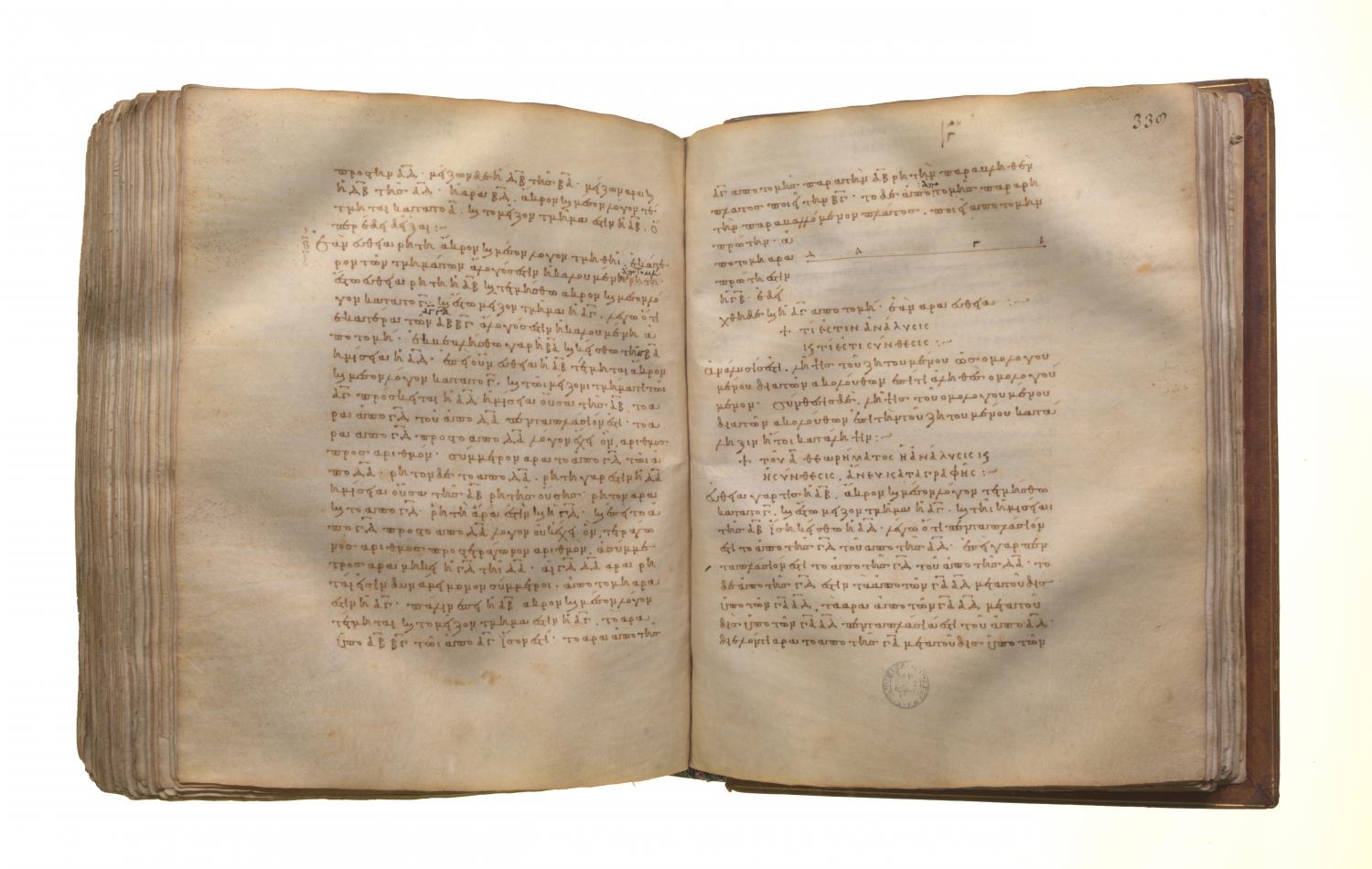Translations
If a rational straight line be cut in extreme and mean ratio, each of the segments is the irrational straight line called apotome. Let AB be a rational straight line, let it be cut in extreme and mean ratio at C, and let AC be the greater segment; I say that each of the straight lines AC, CB is the irrational straight line called apotome. For let BA be produced, and let AD be made half of BA. Since then the straight line AB has been cut in extreme and mean ratio, and to the greater segment AC is added AD which is half of AB, therefore the square on CD is five times the square on DA. [XIII. 1] Therefore the square on CD has to the square on DA the ratio which a number has to a number; therefore the square on CD is commensurable with the square on DA. [X. 6] But the square on DA is rational, for DA is rational, being half of AB which is rational; therefore the square on CD is also rational; [X. Def. 4] therefore CD is also rational. And, since the square on CD has not to the square on DA the ratio which a square number has to a square number, therefore CD is incommensurable in length with DA; [X. 9] therefore CD, DA are rational straight lines commensurable in square only; therefore AC is an apotome. [X. 73] Again, since AB has been cut in extreme and mean ratio, and AC is the greater segment, therefore the rectangle AB, BC is equal to the square on AC. [VI. Def. 3, VI. 17] Therefore the square on the apotome AC, if applied to the rational straight line AB, produces BC as breadth. But the square on an apotome, if applied to a rational straight line, produces as breadth a first apotome; [X. 97] therefore CB is a first apotome. And CA was also proved to be an apotome.
